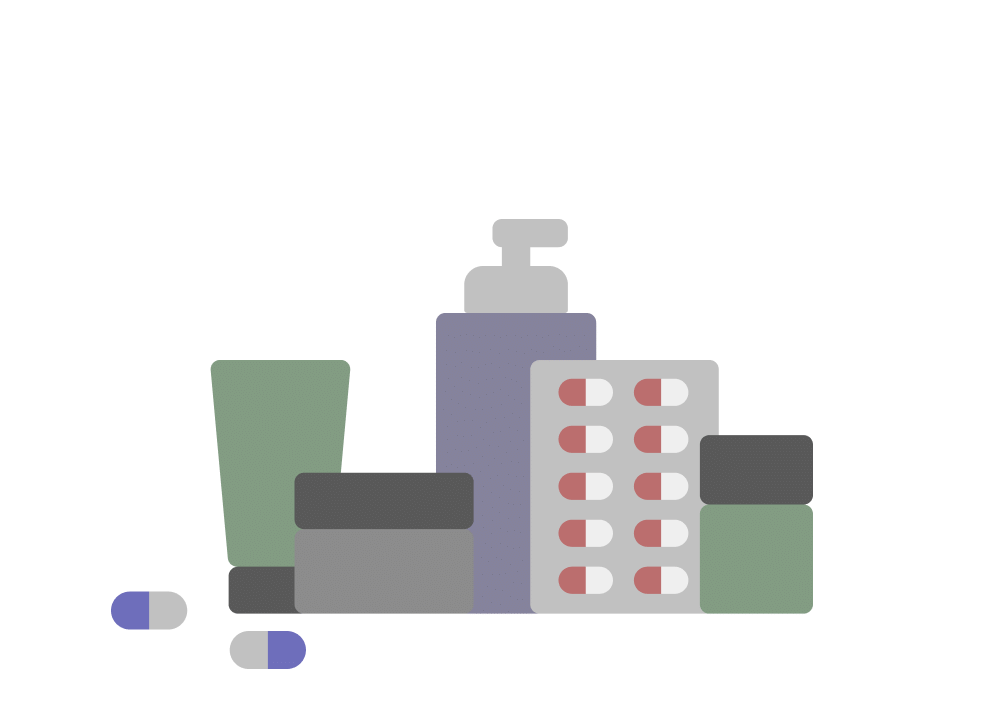
Nacmed P Syrup
Manufacturer
Medlock Healthcare Pvt Ltd
Salt Composition
Aceclofenac (50mg) + Paracetamol (125mg)
Key Information
Short Description
Nacmed P Syrup helps lower body temperature (fever) and reduce pain and inflammation (redness and swelling) both in infants and children.
Dosage Form
Syrup
Introduction
Nacmed P Syrup is a medication that helps to lower body temperature (fever) and reduce pain and inflammation (redness and swelling) in infants and children. It is available in syrup form and contains two active ingredients: Aceclofenac and Paracetamol. These medicines work by blocking the action of chemical messengers responsible for pain, fever, and inflammation.
Directions for Use
Give this medicine after food to avoid abdominal discomfort in your child. Maintain a log of your child's temperature. If you do not see any improvement, contact your child's doctor for advice. Keep a track of the dose and the frequency in which you have given this medicine to your child. This will help prevent overdosing.
Safety Information
Side Effects
No common side effects listed.
How it works
Nacmed P Syrup comprises two active ingredients: Aceclofenac and Paracetamol. These medicines work by blocking the action of chemical messengers responsible for pain, fever, and inflammation.
Quick Tips
Give plenty of fluids to your child to ensure proper body hydration (water-levels) Give your child a balanced diet Encourage your child to have optimum sleep since sick children get tired soon and getting plenty of rest helps them recover faster. Stop the medicine and consult your child's doctor in case your child exhibits allergic rash or stomach pain soon after taking this medicine.
Related Medicines

Aviclo P Syrup

Echos P Syrup

Histoflam P Syrup

Acceclomax Plus Syrup

Fenvolk-P Syrup

Synid P Syrup

Resqdol P Syrup

Simgesic P Syrup

Aceclowen Syrup

Ab Fenac Plus Syrup
Frequently asked questions
Should I adjust the dose of Nacmed P Syrup for my child based on the severity of their illness?
No, it's recommended to consult a doctor before making any changes to the prescribed dose. Increasing the dose without proper guidance can lead to toxicity, while decreasing it may cause symptoms to recur.
What is the correct dosage of Nacmed P Syrup for my child?
Your doctor will determine the appropriate dose based on your child's condition and body weight. It's essential to stick to the prescribed dosing schedule to ensure safe and complete recovery.
How should I store Nacmed P Syrup?
Keep it at room temperature, in a dry place, away from direct heat and light. Ensure all medicines are out of children's reach and sight to prevent accidental intake.
Can all children be given the same dose of Nacmed P Syrup?
No, the doctor will decide on an individualized dose for each child based on their age and body weight. The dose may change as your child grows older, so it's crucial to follow your doctor's instructions.
When can I expect my child to feel better after taking Nacmed P Syrup?
The duration of treatment varies depending on the severity of the infection. Continue giving the medicine in the prescribed dose and frequency, and you should notice improvement in pain or fever, with your child feeling better soon.
Are there any serious side effects to be aware of when using Nacmed P Syrup for my child?
While generally well-tolerated, if your child experiences persistent vomiting, body swelling, decreased urine frequency, or a severe allergic reaction, seek medical attention immediately.
What are the specific contraindications associated with using Nacmed P Syrup?
This medicine is not suitable for patients with known allergies to its components or excipients, other painkillers (NSAIDs), stomach ulcers, heart failure, high blood pressure, liver disease, or kidney disease.


